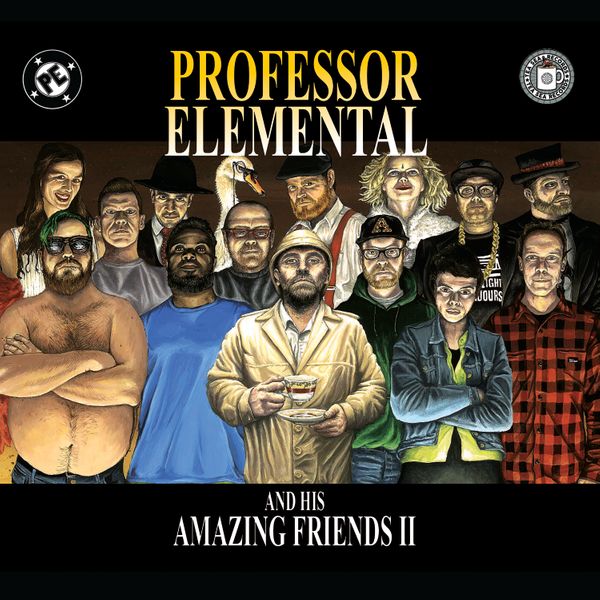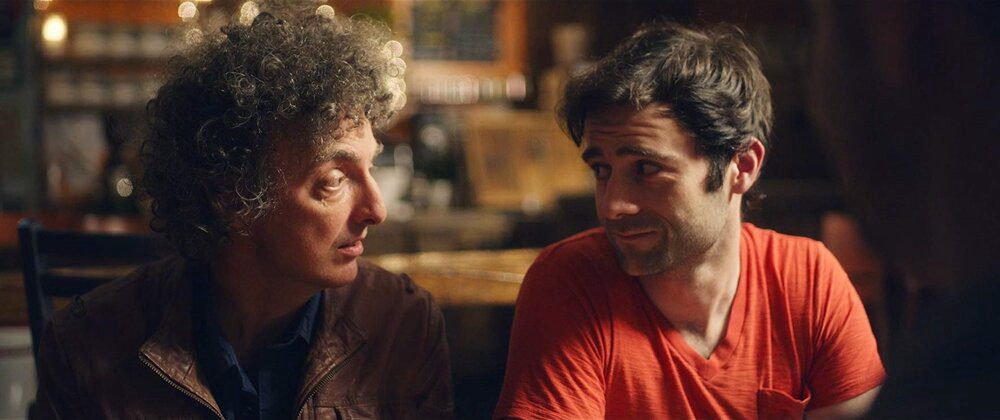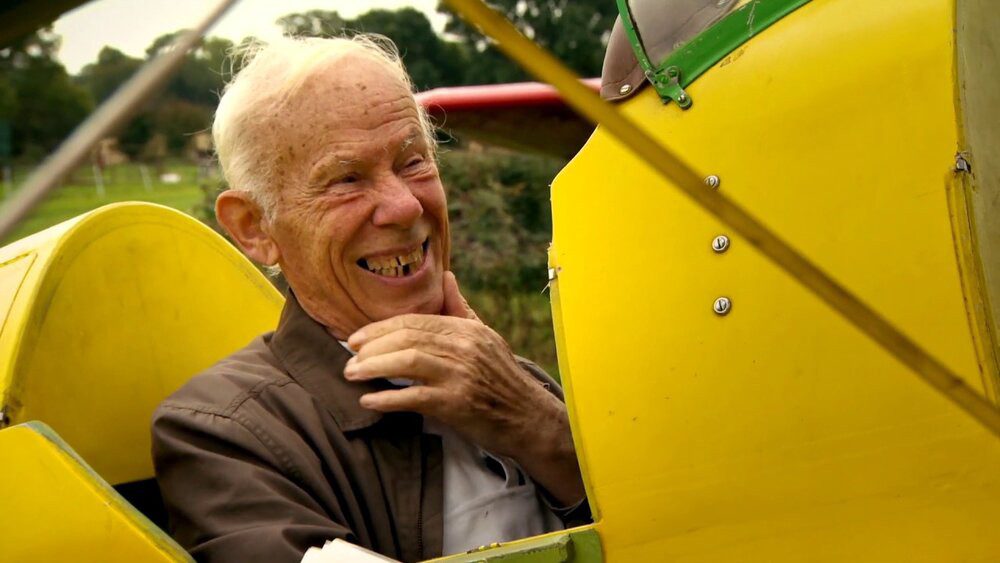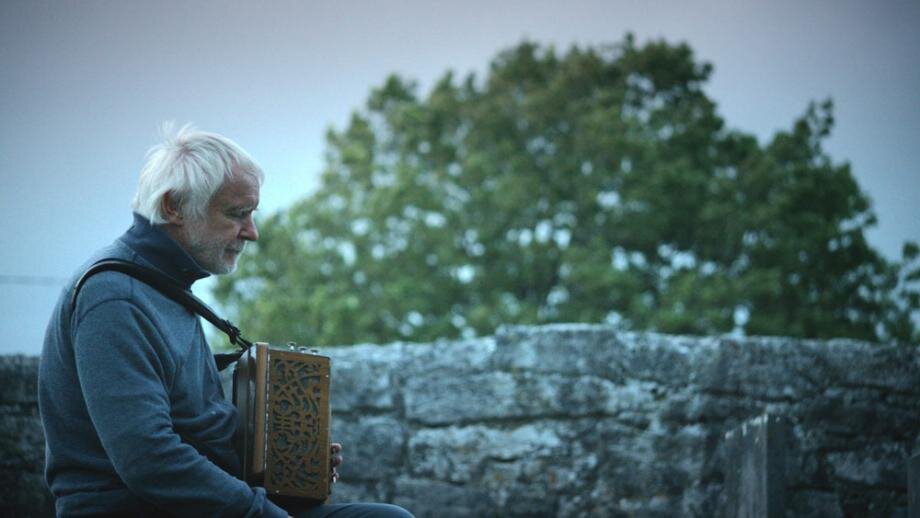Welcome to What’s the Buzz, where members of our staff provide you with recommendations on a weekly basis. This week’s entries come from: Hawk Ripjaw, John Bernardy, Don Shanahan, and guest Tim Kavanagh.
Hawk: I haven’t been into American Horror Story for some time, but the theme for Season 9 proved too irresistible. AHS: 1984 is, so far, a straight homage to ’80s slasher films, even taking place at a summer camp just begging to be besieged by an insane killer with a specific gimmick and a thirst for the blood of horny teenagers. Given how much time I spent studying slasher films of the ’80s in college, AHS: 1984 scratches a very specific itch for me. The mood, feel, and absolute camp of the ’80s is captured effectively here.
The show opens with a wonderfully campy credits sequence delivered in 4:3 aspect ratio, starting with grainy aerobics videos, and moving into cuts between foreboding weapon shots, snippets of ’80s pop culture and a wild, vintage cyberspace serving as a backdrop to the names on the marquee. A ridiculously catchy synthwave theme punctuates the flurry of violence and nostalgia.
Even the directing style sharply evokes the era, introducing the main characters in freeze-frame shots with their names appearing in the frame in aggressive font. More traditionally horror-themed cinematography decorates the episodes, featuring multiple voyeuristic shots through the trees, campy gore, and shot framing that asks more questions than it answers, opening up a lot of opportunity for speculation.
By the second episode, there is a lot going on. I haven’t watched much AHS, but I know that part of its M.O. is to introduce some sort of wild twist at some point in the season that completely subverts the original logline of that story. A straightforward slasher is certainly not enough meat to fill a 10 episode season, so there has to be something else coming. Joining the ear-collecting Mr. Jingles in terrorizing the camp is real-life killer Richard Ramirez, who claims to have connections to Satan in his strange obsession with killing Emma. One of the most interesting things so far is that the hiker the group hit with their van in the first episode is killed twice by Ramirez here. He also says things such as “I don’t die here” and doesn’t remember anything after 1970.
It’s likely that the hiker is a ghost, but there’s a lot more to unpack in these first two episodes that hint at what’s going to be revealed later on down the season. Perhaps the most popular theory right now is that the group are all method actors coming to Redwood for a reenactment piece a la AHS Roanoke. However, I suspect series creators Ryan Murphy and Brad Falchuk are cleverer than that and have something else up their sleeves. I wonder if picking the very specific year of 1984 has any significance. I doubt there will be any sort of Orwellian twist, but it’s possible. What’s almost certain is that camp owner Margaret is not all she seems—she presents herself as straight-laced but is seen with a bottle of wine. She also walks around with her own set of keys, which almost certainly sets up the prospect of Mr. Jingles copycat killers and/or fake-outs. In any case, I’m starting to see what the appeal is of this series and after 1984 I might have to go back and start watching the seasons I missed.
Tim Kavanagh: The first thing you should know about Professor Elemental is that he is a man who loves classic hip hop. Properly. It is his musical nectar, and something he cares deeply about and takes extremely seriously. At some point in time he realized it was the-thing-he-had-to-be-doing. Thankfully, he had an intuitive understanding that taking the music seriously does not necessitate taking yourself seriously. Rather than tread the well-worn path of middle-class white man pretending to be BAME, he instead embraced the ridiculous nature of his twin identities. He is a passionate hip hop enthusiast and geek. He is also an extremely British eccentric and generally whimsical in nature. From this unlikely mix over a decade ago sprung the Professor.
I am not a hip-hop enthusiast. There are tracks I enjoy of course, but it is not and has never been a genre that drew me into its sphere. What I do love is being happy and being entertained (also dressing like a loon, which may or may not be of relevance here). Professor Elemental is entertaining. Always. The man gigs relentlessly, honing his skills in front of live audiences. I have had the pleasure of seeing him perform live a few times, and he does not fail to deliver.
Professor Elemental and his Amazing Friends II is the latest addition to his extensive catalogue, which includes musical solo work and collaborations but also diverse side projects such as a small run of Professor Elemental comics, and even a short novel. This time around is the second album to specifically showcase collaborations with a variety of independent artists. We are presented with a wonderfully diverse range of oddities, and you very much get the impression that in bringing it together a mighty good time was had by all.
Hip hop is the thread that runs throughout, but along the way there are touches of swing, of disco, even something resembling a sea shanty. All of it is served up in his traditional joyful style. This music is meant to be enjoyed.
Never let it be said there is no meat on the bone though. It’s not all frivolity and nonsense. In “Brave New World” a conversational style explores topical themes of the pros and cons of the internet age. “Ps & Qs” is a specific take down of the aggressive and misogynistic environment many rappers choose to promote.
Back in the realm of the fantastic, some of the Professor’s best loved work I am going to label as ‘adventure storytelling’. We have some of that here too. In fact, “Devil in the Desert” is definitely one of the highlights for me on the album, and had me smiling from the opening beat.
Just as you think you have a feel for the party vibe of the Amazing Friends, the weirdness steps up a gear and we end by meeting “Nemesis” (which is unexpected to say the least).
Professor Elemental is indeed the OG, here of course meaning the Original Gentleman. As he tells us during “Walk In The Sun”: “Winning’s not a factor, it’s all how you play”, and “No better time spent than making art”. I find it hard to disagree.
If anything above has you intrigued then I strongly recommend a quick expedition across the ol’ information superhighway to watch a video or two from the back catalogue. Perhaps “Fighting Trousers”, “Everything Stops for Tea”, or “I’m British” are phrases you might want to keep in mind. Further investigations will lead you towards www.professorelemental.com where this new album and many other exciting things could be yours to own.

John: The most recent Imaginary Worlds Podcast, titled “Ends of Evangelion,” summarizes a lot in its 35-minute episode covering Neon Genesis Evangelion and the different versions of its endings. It’s a great refresher for people who haven’t seen the show in a while. So many concepts were broken down succinctly, and efficiently, but it does contain some spoilers about the ending(s) as well as the natures of the characters and their Eva units, so consider yourself warned.
The episode covers protagonist Shinji Ikari by way of the “get in the fucking robot, Shinji” memes as well as through his relationship with his father. Later we hear some takes on his relationship with fellow pilot Kaworu, the female pilots, and how Shinji needs to get through his own issues before he can decide what to do with the state of reality that hangs in the balance.
But the bread and butter of this show is explaining the different situations around each version of the Evangelion endings. The main series’ ending might be show creator Hideaki Anno speaking from the other side of a breakthrough from his clinical depression, but if you’re still in a depression yourself you may find it hard to believe it’s that easy. If it wasn’t so chaotic and Anno had more time, he’d haveprobably done it differently, and maybe avoided the death threats. The movie version, End of Evangelion, could be Anno sticking it to the fans and giving them exactly the ending they deserved after treating him so meanly when they didn’t like the ending. But which one is the real ending?
And now the Evangelion Rebuild movies—done with Anno having unlimited time and money to complete the project this time—will finally reach its own ending in 2020 but is this finally Anno completing the series the way he wanted now that he has proper perspective, or is this a selling-out cash grab of a hack?
Anno says all the endings “are equally valid,” but this episode of Imaginary Worlds weighs their pros and cons against each other all the same and turns into quite the compelling episode. Well done stuff, and congratulations!
https://www.imaginaryworldspodcast.org/ends-of-evangelion.html
Don: As a Chicagoan of strong Irish descent myself, let me step in and play the part of “good authority.” I have it on good authority that the annual Irish American Movie Hooley is a boisterous event with a trio of buried treasure movies that normally wouldn’t grace American screens. Just as the event’s name translates: “When a party gets rowdy, the Irish call it a ‘hooley.’” The event took place at The Gene Siskel Film Center over the weekend of September 27–29. All three films were making their Chicago premiere with one American premiere to close the weekend slate.
Misty Button
Misty Button shows us that the whole “starving artist” trope of creative individuals being lousy f–kups with commitment issues is not solely an American pitfall. It bites the Irish too. The protagonist matching these well-worn traits is James, played by Cillian O’Sullivan. To say he lands in a pickle in Misty Button would be an understatement. It’s more like an inescapable vice tightening so hard the soaked-in whiskey squirts out of his pores in this slow-building dark comedy caper.
The newly single and unemployed James and his friends Declan (Patrick Scherrer) and Eoin (Shaun Kennedy) get their ears bent by little rants emanating from Timmy Thomas, a loquacious bard of a man played by John Keating (recognized from last year’s Hooley entry Emerald City), sitting in the same tavern. The twitchy, orange-eating middle-aged man propositions James and Eoin to do the legwork of placing a $10,000 bet on a 35-1 local racehorse named Misty Button. When the two mates blow some of the money on drugs and miss the betting window, they now find themselves in debt to a local crime bully Alonzo (Bret Lada). Worst of all, instead of owing just the $10,000, they owe 35 times that because the titular longshot ended up winning the race, costing all involved a windfall of cash.

The hijinks that ensue from the script and direction of filmmaker Seanie Surgue (making his feature debut after an emerging career in short films) put James, Eoin, and Timmy Thomas through a bungled wringer. Barstool banter turns into double-crosses. Swindles turn into smash-and-grab heists. Roughed up bumps and bruises meant to teach a lesson or two turn into murder. O’Sullivan, often looking and sounding like Colin Farrell Lite, smolders and shouts his way through these increasing obstacles. The scene-stealer is always the wiry Keating. The line delivery and physical quirks of his yarns are infectious.
This is, admittedly for a long stretch, a meandering way to encircle a drain of comeuppance. Misty Button is low on its expressions of suspense and does not employ a musical score to define any consistent tone. You have to hang on words and narrative beats. Not all of that meshes smoothly or free from head-scratching character choices.
Just when Misty Button seems like it runs out calamities to justify where it’s going, the double-crosses emerging from the previously mentioned banter flip the movie (and you) on its ear. The wild third act twists are a saving grace that redeem what was messy and turns it into a clever hustle primed to be backed often by “The Rocky Road to Dublin” by The Dubliners. Come to be pleasantly surprised.
The Man Who Wanted to Fly
This charming documentary from director Frank Shouldice reminds viewers that dreamers come in all ages and with aspirations of all sizes. Rural Irishman Bobby Coote of County Covan near Bailieborough tells himself and others “if you want to do it, do it” and “keep going until you’ve stopped.” He is north of 80 years old and his goal is to be a pilot. He is the dreamer of this film’s title.
Pun intended, the flighty thing about Bobby is his shifting interests and wavering luck as a tinkerer, fiddler, and clock repairman. He has his artful and handy skills, but zero flying experience. When he impulsively buys a microlight plane to put together and pilot, neighboring eyes open to not quite the desire place of beginning encouragement. The crazy old man labels arrive aplenty, especially from his brother Ernie. Alas, there is a worthy journey here to witness in The Man Who Wanted to Fly.

There is an entirely lovable and cheeky quality to watching these two fuddy-duddy men get along with dueling pessimism and optimism. These two, as the documentary says, live the language of life. These are two seniors in an analog world with a richness to be found in their day-to-day simplicity. The setbacks enlarge Ernie’s doubts and shrink Bobby’s heart. When the breaks start to come Bobby’s way, his smile of wonder triples anything oppositional from Ernie and any other doubters.
You cannot help but root for this old man as Bobby motivates himself against every word of “never” said to him. The aerial photography by cinematographer Dave Perry is nicely majestic rising about the domestic surfaces. This is a lovely slice of life with a positive purpose from Shouldice. The fluttering musical score by Giles Packham grows with the human spirit of the documentary. The sentiment of The Man Who Wanted to Fly is infectious. Enjoy the smile on your face and maybe challenge yourself to rewrite your own dreams free of age limits.
Cumar: A Galway Rhapsody
Annually and without fail, the Irish American Movie Holley delivers a gorgeously appointed documentary among the trio of features that either fascinates with an affecting citizen testimony or astonishes us with the natural beauty of the Emerald Isle. The Man Who Wanted to Fly covers the former while Cumar: A Galway Rhapsody is a poetic and dazzling example of the later. With soaring cinematography across streets, surf, and sky, every inch of this documentary drips with the heavenly chemistry of its fine and proud home country.
Directed by Aodh O Coileain, Cumar: A Galway Rhapsody chronicles the layers of culture and natural wonders in and around the western city of its title. This film shows many of the rich reasons why it was sought for that distinction. A collection of six artists perform and explore the cultural nuance alongside the flowing stream of visuals.
Those featured artists include writer Mike McCormack, poet Rita Ann Higgins, singer Róisín Seoighe, street theatre director Noeline Kavanagh, visual artist Pádraic Reaney and musician Máirtín O’Connor. A seventh comes from the narration of comedian Tommy Tiernan which adds context and character to the scenes observed. The last topping bow of auditory presentation comes from composer Jake Morgan and music from Matthew Berrill and Nicola Geddes.

The title word “cumar” translates to “confluence.” In its most natural definition, confluence refers to where multiple waters converge. In Galway’s case, that matches the River Corrib and the churning bays washed by the Atlantic Ocean. Through labeled sections, Cumar: A Galway Rhapsody one of those artists is highlighted and the various sub-definitions of cumar and confluence preface each vignette. Some of those thematic pinpoints include cumar as “the accord between the artist and his tools, the energy that binds the ensemble, the influence of a place on the human spirit, and the unity that stems from a gathering of people.
With this draping chapters, Cumar: A Galway Rhapsody is well-paced and patient with unwrapping its historical notes and asides. Each chapter is an anecdote to the soul of the people. Parallel to the human element, each chapter, as well, is an earthly sermon to the land and sea. This is a fine credit to O Coileain and his editing team which included Conall de Cleir and Oisin Misteil.
The true feast of this documentary is the serene photography. Fast and slow, the blend of urban and domestic landscapes is observational and pastoral. Near and far, the film is lifted even greater by the wondrous aerial photography captured by Roman Bugovskiy and fleet of cameras. Theatrical screens will fill with this imagery and evoke dreams of reaching out and touching these divine treasures. That was an impressive treat and feat to enjoy at the Irish American Movie Hooley.
Those our are recommendations this week. What are yours? Let us know in the comments!


